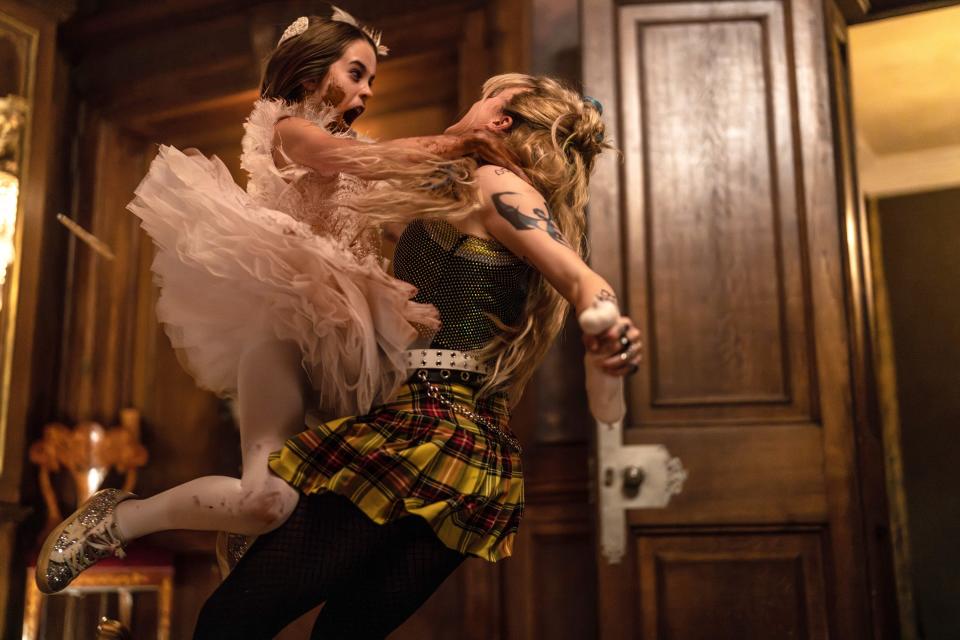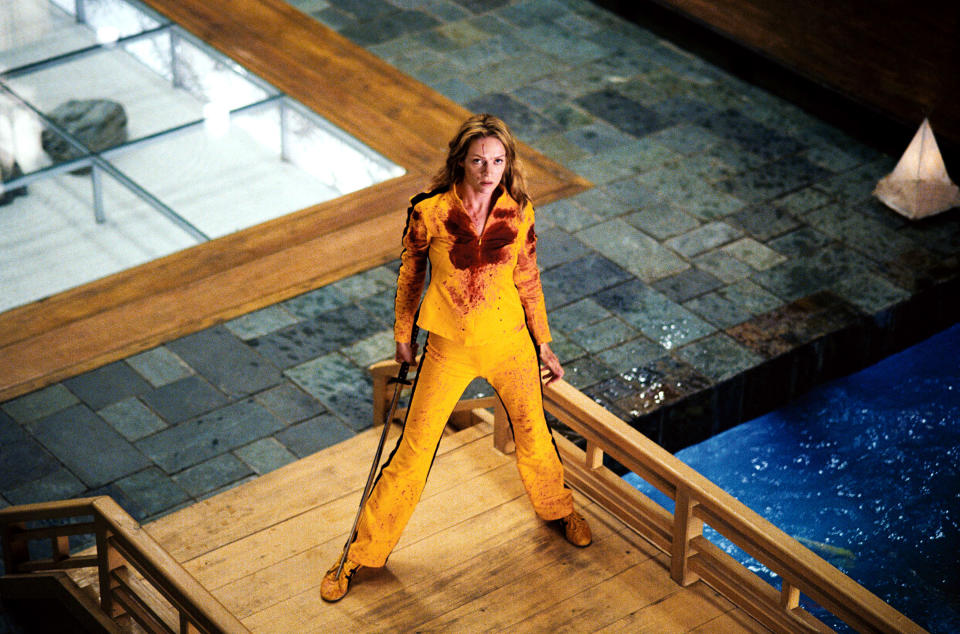Turns Out, the Basic Recipe for Fake Blood Hasn’t Changed Much Since the ’70s

- Oops!Something went wrong.Please try again later.
- Oops!Something went wrong.Please try again later.
Setting a vampire — even a tiny one, as in “Abigail” — loose on the world is a messy affair, which got the IndieWire Craft team wondering less about stakes and more about modern special effects make-up. Are there fake blood brands you can buy? Are there different blood recipes for film versus TV? How much has fake blood changed from Nosferatur to Hammer horror to today’s scary movies? Or is fake blood just all VFX these days?
Who better to ask than Dave Elsey of Igor Studios, a self-described makeup FX Jedi and one of the lead designers of the chilling corpsicle in “True Detective: Night Country”? A connoisseur of practical tricks to create worlds of fantastic horror (he’s collaborated a bunch with Guillermo Del Toro, after all), Elsey’s recipes for fake blood are most often based on the ones that makeup legend Dick Smith came up with in the ’70s, which have been used in everything from “The Godfather” to “Taxi Driver” to “The Exorcist.”
More from IndieWire
Stephen Colbert Once Laughed So Hard at 'Tropic Thunder' His Wife Thought He Was Dying
The 10 Best Teen Rebellion Films: 'Pump Up the Volume,' 'Heathers,' and More
One of the key ingredients for Smith (along with zinc oxide, corn syrup, and food coloring) is Kodak Photo-Flo, a wetting agent that’s used in photography development. “The trick is getting the proportions just right,” Elsey told IndieWire. “Zinc oxide gives you a creamy base, corn syrup thickens it up and gives it a glossy finish, and food coloring gives it that real blood look. But it’s not just red food coloring you need; you also need a little blue and yellow to get the perfect hue.”
That wasn’t always the case. Hitchcock famously used chocolate syrup in “Psycho” because its texture read the best. And Akira Kurosawa experimented with ink, dark paint, and pressurized carbonation for dynamic spurts of fake blood in sword wounds.
But the problem with Smith’s recipe is that you don’t want to put a bunch of chemicals meant to treat photographs anywhere near your mouth. So Elsey and everyone else making fake blood subs out the Kodak agent with more edible products like dairy creamers. There’s also the modern wrinkle that can come up when blood needs to flow not on actual skin but on silicon, prosthetics, or fake dead bodies. “All the normal blood recipes for fake blood bead up on silicone and don’t look real. So we use bloods that are now specially formulated to run, splat, and drip on silicone more realistically,” Elsey said.
Still, Elsey said that making fake blood is usually the best answer to the problem, and most FX artists will know how to make a decent formula base. “You can even use products like denture fixative to make congealed blood for older wounds. For older congealed blood, say, for a zombie movie, you can also change the color pretty easily to be darker-looking just by messing with the combination of red, blue, and yellow food dye. I wish I had known how easy it was to make when I was a kid,” Elsey said.

For squibs that simulate bullet wounds or knives that carve into a character’s skin, the mixture and method adjust accordingly. Thinner mixes will get a killer splat when the squib goes off, but thicker mixes will create meaty gushes of blood that could ooze after the hit. For head wounds, where part of the horror is seeing blood and maybe brain splatter on the wall behind the actor, the secret is simple: porridge. “It’s the perfect texture to add that extra bit of lumpy gore to the mix,” Elsey said.
A lot of the variation in blood makeup these days is down to director preference. “If you have ever seen an old movie where it looks like they just used red paint, well, they probably did exactly that back in the day, but some modern directors dig that old-school vibe and go for it deliberately,” Elsey said. “With Tarantino, for example, he is known for working closely with his makeup and special effects teams to achieve the desired ‘Tarantino universe’ blood for his films.”
Tim Burton, meanwhile, prefers a rich shade of red for his blood effects, similar to the Hammer Horror films. Sam Raimi has his own preferred formula (Elsey thinks it involves a fair amount of dairy creamer) as do many other directors. Makeup artists are adaptive to the needs of a particular project, filmmaker, or actors.

“The truth is, there are bloods made for every occasion, and they all can change depending on the use and needs of the production. Need something that tastes nice and minty fresh for a mouth scene? We got you covered. Looking for something vegan-friendly? We’ve got formulas for that, too. In fact, even if your actor’s diabetic, or sugar just isn’t their thing, we’ll whip up some beetroot juice mixed with distilled water. And there are even bloods that are formulated by opticians that are safe to put in your eyes,” Elsey said.
Regardless of the type used, Elsey said, there’s nothing more cinematic than fake blood. And sometimes, there’s no higher stakes than getting it right. “True story: I remember once being asked to create a bullet hit in an actor’s leg in a real location. This was a rich guy’s house in a very exclusive part of town, and the room was filled with priceless antiques. I was fitting the device I was going to use when the director came up and asked me where the blood would go once I hit the trigger to spurt it. I tried to explain that blood tends to have its own mind about where it’s going to go. He explained to me that the carpet on the floor was probably worth more than the camera and the whole crew we were using that day, so he put a handkerchief on the floor and told me to make the blood hit only in that exact spot. I tried to explain why that wasn’t really realistic, but he was insistent, and he made me swear I would do my best to hit that target,” Elsey said.
“Then I was told I couldn’t be in the room when they filmed it, and I wouldn’t even be able to see what I was doing! They just shrugged and said they would signal me from the next room, and I just had to hit the button and pray. We did the shot, and on command, I hit the button to make the blood fire. After the take I rushed into the room, and could see the director and the producer and all the assistant directors in a circle in the middle of the room. My heart was in my mouth as I approached, and as I got there, I could see all of the blood right in the middle of the handkerchief. The producer looked at me and said how amazing I was and thanked me. But the truth was it was pure luck!”
Best of IndieWire
The 10 Best Teen Rebellion Films: 'Pump Up the Volume,' 'Heathers,' and More
The 28 Best True Crime Shows Streaming Now, from 'Under the Bridge' to 'The Vow'
The 10 Best Doppelganger Films, from 'Dead Ringers' to 'Vertigo'
Sign up for Indiewire's Newsletter. For the latest news, follow us on Facebook, Twitter, and Instagram.

